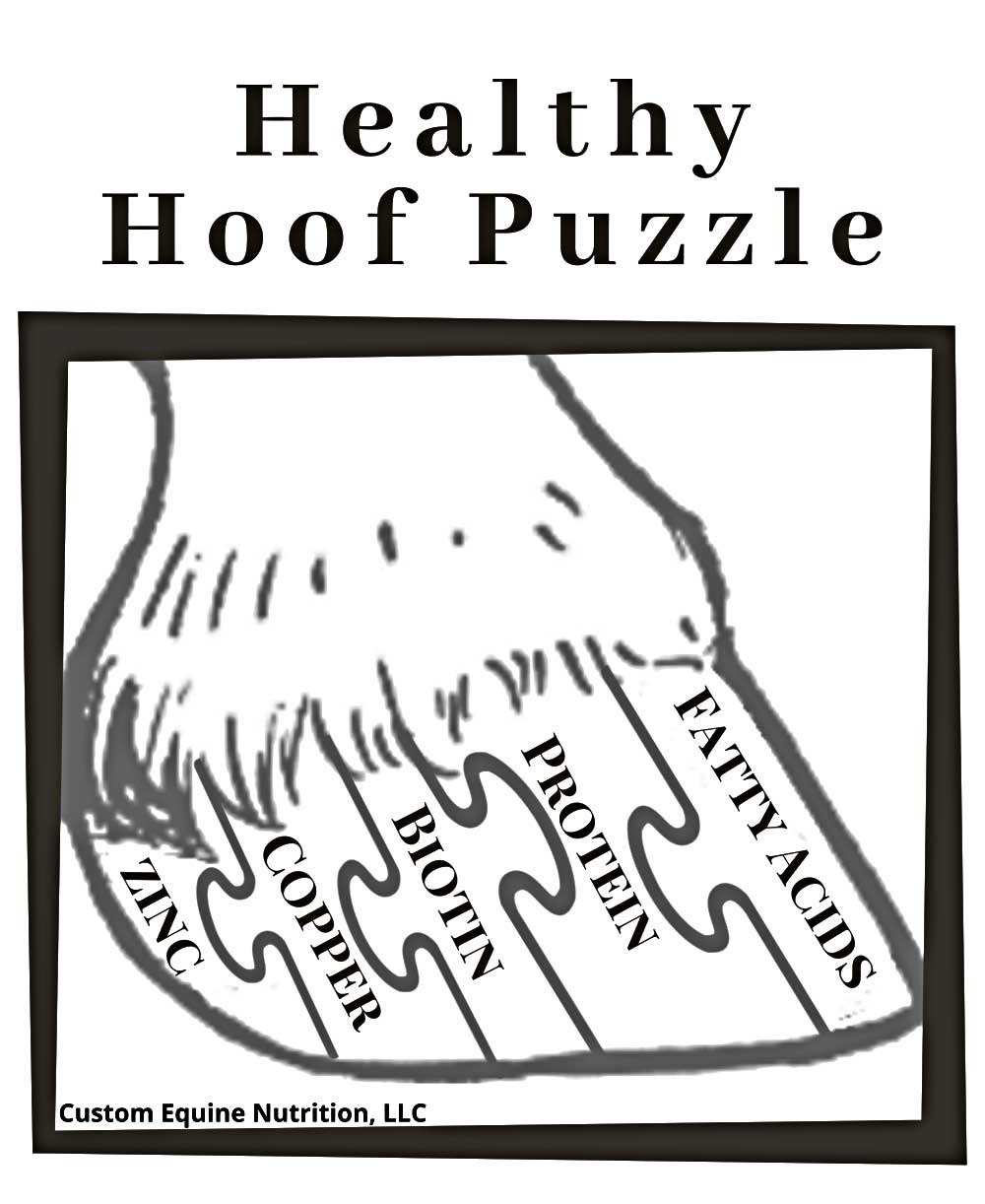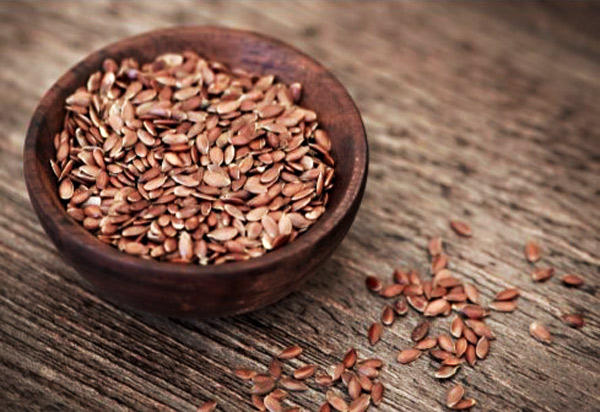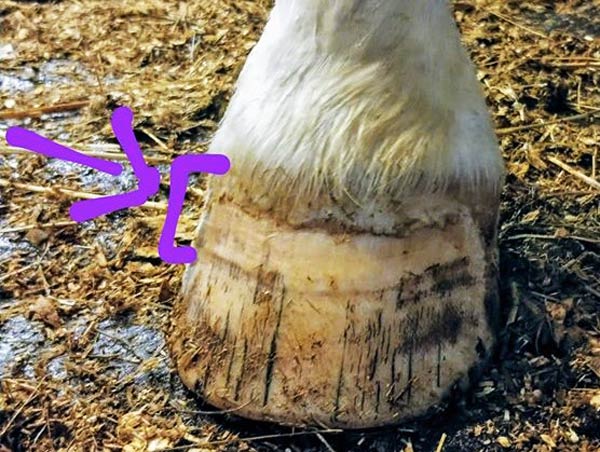Dry brittle hooves, chronic thrush, lost shoes … all reasons someone will head to the feed store to buy a biotin supplement. Most manufactures will tell you to keep your horse on biotin for at least 6 to 12 months before you see a difference. Now it’s a waiting game. So much can change in 6 months that might affect hoof quality — excess rain, winter snow, dry summer, lush pasture turning to overgrazed pasture, new hay cutting or any additional change to the diet. If you do see a better-quality hoof in 6 months, is it because of the biotin or one of the other many reasons?
Here is the deal — biotin is just one piece of the healthy hoof puzzle. If you put all the other pieces of the puzzle together, you will see hoof improvement in 6 to 12 weeks, not months.
So, what are the other pieces of the puzzle?

Protein. On a dry matter basis, the hoof wall is 90% protein. This doesn’t mean that a diet high in crude protein will cut it, though. A diet that is high in crude protein might still be lacking in specific amino acids (protein building blocks). Methionine and lysine might be the two most important amino acids for your horse’s hooves. They are necessary for the production of all protein types, including keratin. Supplementing 10g of lysine and 5g of methionine is reasonable.
Fatty acids. The outer layer of the hoof wall contains fat. It helps create a permeable barrier to keep internal moisture in and external moisture from the environment out. Hooves with a fatty layer should have a shine to them.
It’s best to use a horse’s natural diet as a guideline for supplemental fats. Horses on pasture receive mostly omega-3 fatty acids and some omega-6 fatty acids. When your horse does not have access to quality pasture, supplement with flax (photo below) or chia. Four ounces (by weight) is a reasonable amount to supplement.

Zinc and copper. Zinc and copper are essential for hoof quality. There is a high concentration of zinc present in the hoof. With inadequate levels, your horse can experience weak connections, thin walls or slow hoof growth. Deficiencies in copper include soft feet, cracks, abscesses and thrush. These two small but mighty minerals also work together.
Together, copper and zinc support the proper function of the enzyme superoxide dismutase. This is a free radical superhero that helps protect the fats from breaking down. This breakdown can leave the hoof venerable to outside organisms.
High levels of iron or manganese can interfere with the absorption of copper and zinc. Forage is high in iron, therefore supplemental copper and zinc are very important for hoof quality. Look for a supplement with a minimum 500 mg of zinc and 200 mg of copper. Some horses will need much more than this, depending on the iron level in their forage. Avoid supplements that contain additional iron. This can be hidden in the ingredient list under ferrous sulfate. If a company is not transparent with the amount of copper and zinc per serving — listing it in ppm rather than mg — call and ask about the amount of mg per serving.
Vitamin B. Horses produce B vitamins in the hindgut. Those on high forage diets should have enough B vitamins. However, horses prone to colic, ulcers, stress, antibiotics or digestive upset might not produce adequate amounts.
There are eight different vitamin Bs. Out of all of them, biotin has been studied the most. A sufficient amount of biotin is 20 to 30 mg. Save your money on products that state they provide more than this since excess will simply be excreted in your horse’s urine.
Complete Puzzle = New Growth
The photo below shows the results of 3 months on a diet fortified with all the nutrients that support hoof quality.
Ensure your horse’s hooves have the best nutrition possible by providing the five nutrients that complete your puzzle.

Photo: Cold Hollow Hoofcare







Post a comment
Report Abusive Comment